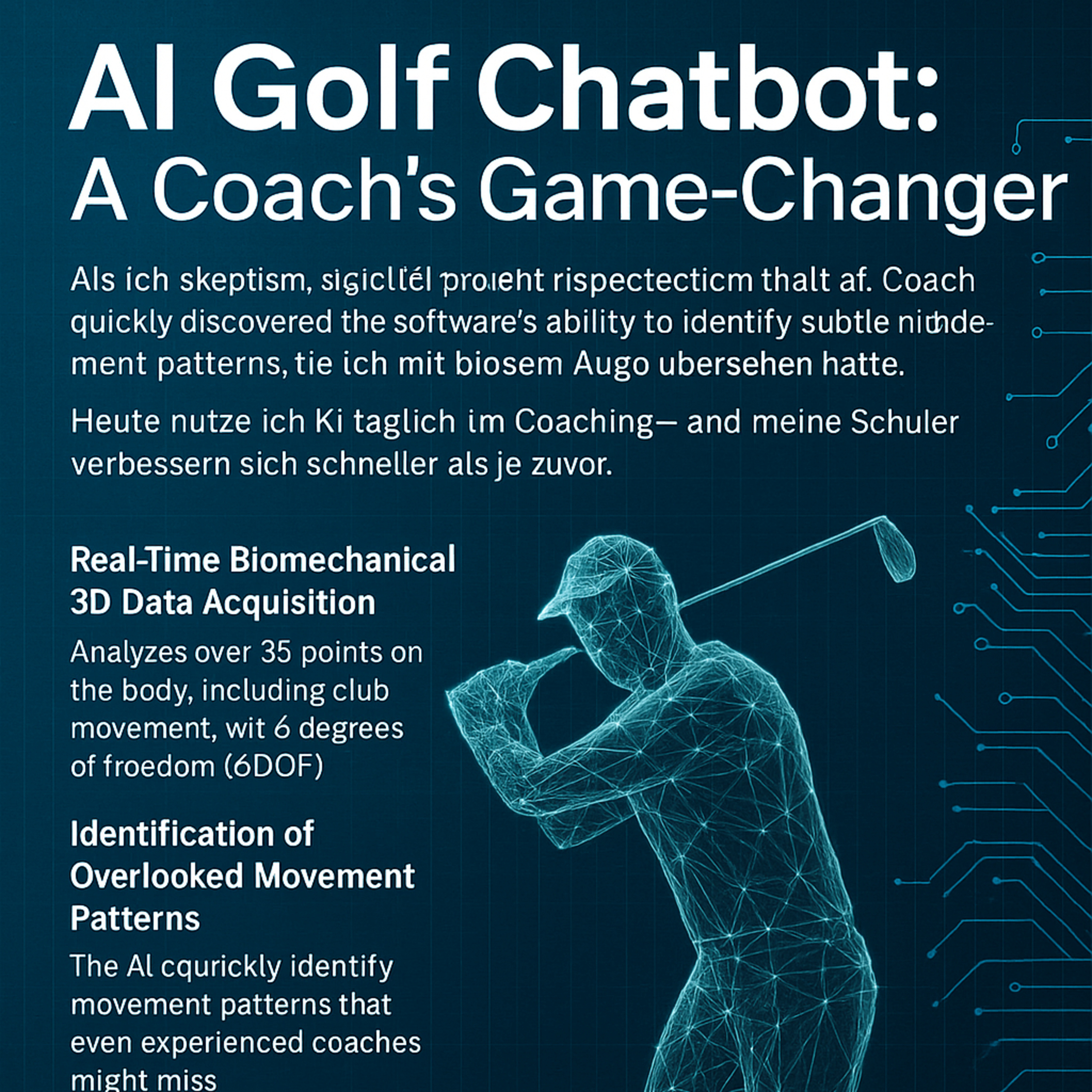#336 AI Golf Chatbot: A Coach’s Game-Changer
- Author
- Golf247.eu
- Published
- Thu 04 Sep 2025
- Episode Link
- https://podcasters.spotify.com/pod/show/puttin-pro/episodes/336-AI-Golf-Chatbot-A-Coachs-Game-Changer-e37n6g9
When I first encountered artificial intelligence in golf, I was skeptical. But within just 10 minutes of testing the AI Golf Chatbot, it had identified swing patterns even I hadn’t noticed with my trained eye. Since then, this technology has become an indispensable part of my daily coaching—and my students are improving faster than ever.
At its core, the AI Golf Chatbot captures real-time biomechanical 3D data by analyzing over 35 body points, including the club, with six degrees of freedom (6DOF). This means it tracks both rotational and linear movement independently. Most notably, it measures chest and pelvis motion separately—offering unparalleled insight into a golfer’s swing kinematics. What once required a high-end biomechanics lab is now available via a smartphone.
What makes the platform so transformative is not just the data—but how it’s used.
The AI can detect common faults like “scooping,” where the shaft lags behind the ball at impact. It then recommends drills matched precisely to the problem, eliminating guesswork. Whether you’re working in person or remotely, this leads to faster, more targeted coaching interventions.
But the true power of this technology lies in the collaboration between AI and coach. While the software captures and visualizes complex data, the interpretation, empathy, and guidance remain entirely human. AI doesn’t replace expertise—it amplifies it.
Students benefit too. Beginners gain body awareness much faster. Advanced players finally understand why certain swing patterns fail and how to correct them. One student put it best: “Now I see what I’m actually doing—not just what I think I’m doing.”
This shift—from subjective feeling to objective measurement—is revolutionary.
For coaches, the AI Golf Chatbot is more than a tool; it’s a trusted assistant. It enhances feedback quality, accelerates learning, and strengthens the coach-student relationship. In a field where precision is everything, this technology provides clarity, speed, and confidence.
Artificial intelligence in golf isn’t the future—it’s the present. And it’s changing how we teach, learn, and improve.
